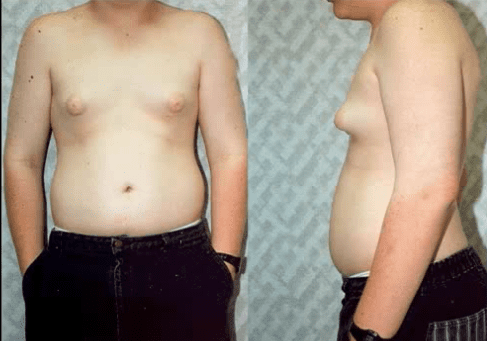Medical Council of Canada MCCQE - MCCQE Part 1 Exam
A 6-year-old girl is found to have a blood pressure of 130/75 mm Hg. She was born prematurely at 32 weeks' gestation and required ventilation. There is a family history of hypertension in 3 grandparents. Clinical examination reveals a grade 1/6 mid-systolic murmur, no renal bruits, and femoral pulses are difficult to feel. Which one of the following is the most likely diagnosis?
A 91-year-old man comes to the Emergency Department reporting blood in his stools, which has now resolved. He is able to give a history and mentions that this also happened 2 years ago. At that time, a colonoscopy was done and revealed diverticular disease as the cause. Which one of the following is the best next step?
A 15-year-old boy is brought to your office because of concerns about his breast development. He has no other symptoms. His physical examination does not reveal any other abnormality. Which one of the following is the best next step?

In a research study, it is found that people who smoke tobacco cigarettes drink more coffee and have higher rates of lung cancer than people who do not smoke. However, the consumption of coffee alone is not associated with lung cancer. Which one of the following best describes the contribution of drinking coffee in the study?
A 56-year-old man is admitted to hospital with pyelonephritis and started on intravenous antibiotics. On day 2 of his hospitalization, he continues to report right flank pain, but he is able to walk. His vital signs are as follows:
Temperature: 38.5°C
Blood pressure: 90/60 mm Hg
Heart rate: 105/min
The patient is mentating well but is concerned about his dog that is home alone due to his unexpected hospitalization. He requests to be released from hospital as he needs to make arrangements for his dog. Which one of the following is the best next step?
A 32-year-old woman, gravida 0, comes to your office for contraception counselling, specifically about insertion of a levonorgestrel-releasing intrauterine device. She has a past history of breast cancer and is presently on tamoxifen. Which one of the following is the best advice for your patient?
A 62-year-old woman is referred to your clinic for evaluation of hypercalcemia. She has a history of hypertension and vitamin D deficiency. Her medications include hydrochlorothiazide and vitamin D supplements. Laboratory investigations are as follows:
Calcium: 2.72 mmol/L (↑)
Phosphate: 0.9 mmol/L (↓)
Parathyroid hormone (PTH): 0.9 pmol/L (↓)
25-hydroxy vitamin D: 80 nmol/L (normal)
Which one of the following is the best next step?
A 72-year-old man presents to your clinic accompanied by his 70-year-old husband. The patient reports that, over the last several months, his libido has been very low. Which one of the following would be the best next step?
Following a potluck supper organized by the residency director of your training program, many of your fellow residents and other guests fall ill with gastroenteritis. Which one of the following is the best way to identify the source of this food-borne outbreak?



